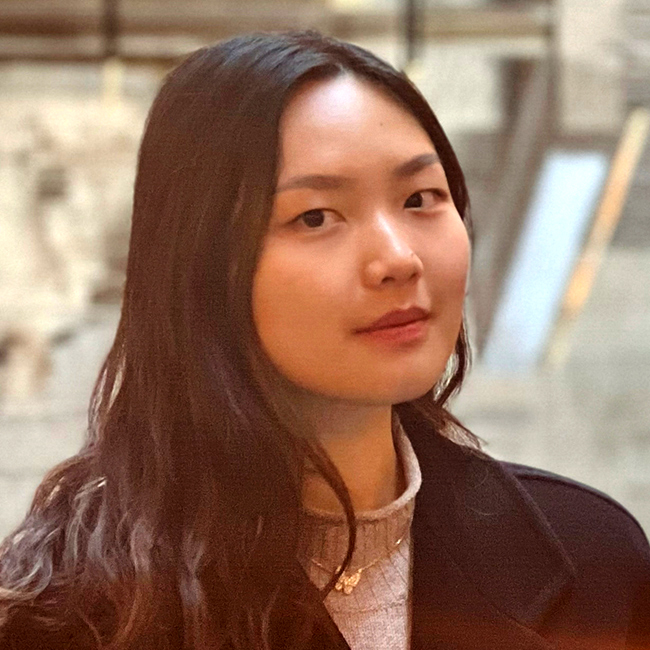
Master of Behavioral and Decision Sciences, University of Pennsylvania, ‘22
Bachelor of Arts, Organizational Sciences and Psychology, Art History Minor, The George Washington University ’21
Valerie Guo (Master of Behavioral and Decision Sciences ’22) made plans for graduate school as soon as she finished her undergraduate double major in organizational sciences and psychology. “I felt compelled to understand more about the fundamentals of human behavior,” she explains, though she wasn’t yet confident what her career aspirations might be. She applied to several related graduate programs including Penn’s Master of Behavioral and Decision Sciences (MBDS). “When I was accepted into the MBDS,” she remembers, “it was a meant-to-be moment. I felt like there was a link between me and the program. I could really take the time to explore behavioral science in an academic setting.”
At first, Valerie thought the master’s would prepare her for a PhD. The longer she was in the program, however, the more she realized how many opportunities exist to apply behavioral science in industry. Real-world problems and applications that the Penn MBDS exposed Valerie to helped her whittle down the sector she was passionate about. “Some people love commercial spaces, some want to go into consulting, some people are really into research,” she says. “I realized health and health outcomes are definitely what I'm interested in, personally and in my career.”
Valerie already had some exposure to the field of healthcare: She comes from a family of medical professionals, and she took some pre-med classes as an undergrad. But the MBDS program demonstrated to her how behavioral and decision sciences could be applied to promote health outcomes.
Through her coursework, Valerie had the opportunity to work with the pharmaceutical company Bayer on a real industry problem. Her student group was tasked with making recommendations on how to increase e-commerce sales for certain Bayer products. Based on behavioral research, they suggested improvements to product presentations and descriptions. “We were nudging potential buyers to purchase items using key product information and benefits,” she says. “That project was when I realized I could use behavioral science in a health and people-centered field.”
When Valerie began her job search a semester ahead of graduation for health-related positions, a behavioral design position with Lirio caught her eye. The behavioral change company works with healthcare clients to improve patient outcomes using behavioral science and AI to nudge patients toward better health decisions. When she applied, they offered her an internship that turned into a full-time position once she graduated in August 2022.
In her role as a behavioral designer, Valerie learns what the desired patient behaviors are—such as attending annual exams, getting vaccinated, or scheduling cancer screenings—then identifies common barriers to those behaviors. “People can live 100 miles away from a clinic so they put off appointments, or they just simply don't know the importance of getting their vaccination,” she offers as examples. For solvable barriers, effective text and email communications are developed by applying behavioral economics principles, behavioral change techniques, and research evidence—all concepts taught in the MBDS program. Then with the help of AI, customized messaging can be sent to each patient.
Valerie has already seen the difference her role can make. “I am very proud to have contributed to a project last year where we had successes nudging people to attend their mammography appointments,” she says. A number of cases of early-stage breast cancer were caught as a result.
To prospective MBDS students, Valarie says, “It’s okay to come into the program not knowing where you want it to take you. There are opportunities to figure out what your desire is.” Of her own career, she says, “I'm glad that I am helping people along their health journeys. I see improved outcomes across populations and better health results. That’s what’s important to me.”
When she talks about her work with the doctors in her family, she explains, “Whenever you think about a patient who isn’t coming to appointments when they need medical support, and you wonder how you can encourage them to do it—that’s my job: To reach the patients who need to reach out.”
